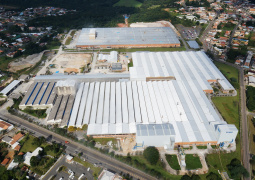Incepa Responds: understand the differences between types of polished porcelain tiles

Thanks to its versatility, durability and aesthetics, porcelain tile has become the key piece in several projects. However, some care is needed when choosing the wall tile. Some technical characteristics must be taken into account, such as resistance, brightness intensity and whether the product is suitable for the place where you want to place it.
In this text from Incepa Responds, we will explain the difference between satin and polished porcelain tile. To begin with, it is important to remember that these terms are related to the finish of the product, that is, its surface.
In addition, Incepa porcelain tiles can be applied to both floors and walls, regardless of the finish they receive. Below, check out the main differences between these two models. Enjoy!
Polished porcelain
As its name suggests, porcelain tiles with a polished finish are polished in their manufacturing process. As a result, we have pieces with a smooth and super shiny surface, typical characteristics of this product.
Its intense brightness gives elegance to spaces, bringing personality and refinement to the environment. However, it is not recommended to use it in wet areas – such as bathrooms, kitchens, and swimming pools – because, as it has a smooth surface and does not absorb water, it becomes slippery.
Therefore, our suggestion is to use polished porcelain tile in dry rooms, such as living rooms, hallways, and bedrooms. Another point of attention is that its shine makes it more susceptible to scratches, so it asks for careful cleaning, just with a damp cloth and neutral products.
Incepa has several products that fit into this category and, as if the unmistakable shine were not enough, the pieces have a rectified finish and joints of only 1mm, the smallest on the market. Meet some models:
Satin porcelain
Porcelain tiles with a satin finish go through a brushing process, as a result, we have pieces with little or no shine. The surface has a silky and smooth texture, providing the feeling of coziness to the environment.
As it does not receive the glossy enamel layer, it is not very slippery and has less chance of scratching than polished porcelain tile. For this reason, it is suitable for homes with pets and can be applied indoors and outdoors.
HD printing allows Incepa’s satin porcelain tiles to evoke the texture of natural materials such as wood, stone, or marble. Below are some examples:
After reading, we hope you have understood the differences between satin and polished porcelain tiles. As we can see, each finish is suitable for an environment, so choose the one that meets your needs and matches your project. Any questions, we are here to help.







